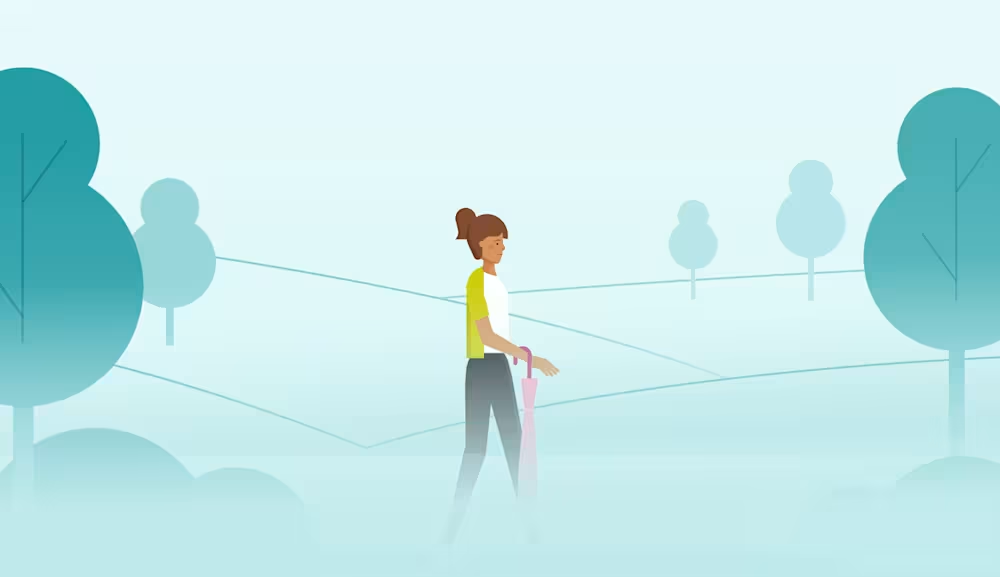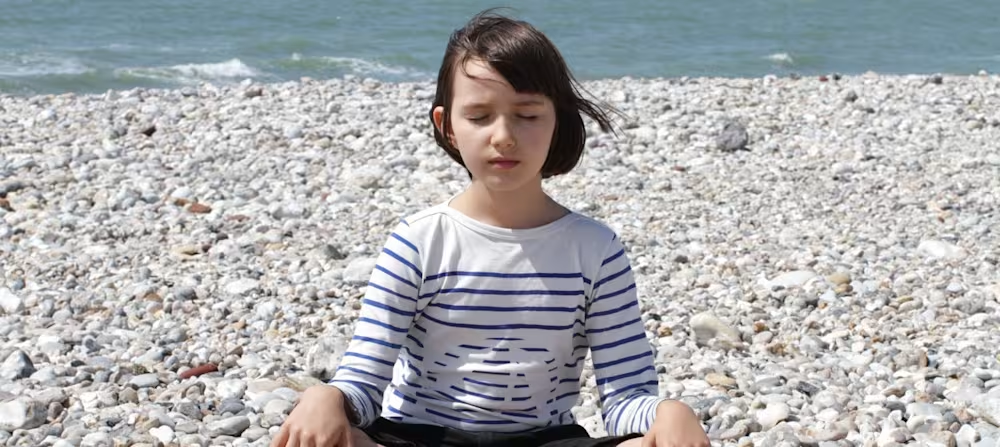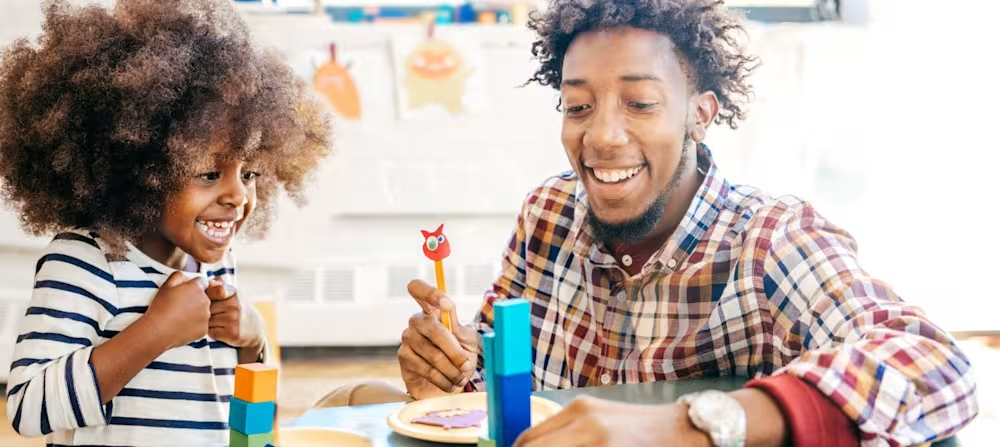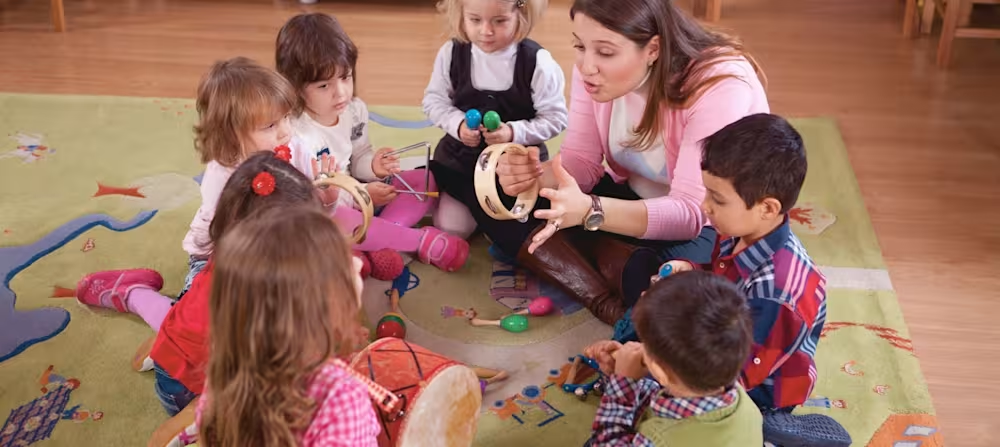A guide to mindfulness for busy parents
Updated Oct 17, 2025

As a busy parent, the last thing you likely need is another lofty item to add to your to-do list. But that’s the beauty of mindfulness: It doesn’t require extra time or learning new skills.
Mindfulness can be practiced while you’re living your normal life, without having to set aside dedicated time and energy. You can do anything mindfully — even use the bathroom! And it can even give you a brief break from the mental load you carry as a parent.
You may have heard of mindfulness and written it off as too time-consuming. One of the biggest misconceptions about mindfulness is that it’s the same as meditation. That’s not the case, though. Meditation is a dedicated way to practice mindfulness, and it is a valuable exercise for self-care and reflection. But there are other ways to be mindful too.
In this article, we’ll give you the lowdown on what mindfulness is and provide tips on how to seamlessly incorporate it into your daily routines. We’ll even help you get your child involved too!
What is mindfulness?
At its core, mindfulness is being present in the moment without judgment. The key for parents is the “without judgment” part since it’s easy to get into a loop of constantly evaluating ourselves and our children too.
Think about how many times a day you question yourself as a parent, analyze your little one’s behavior/development, dwell on the past, or fixate on the future and all of the things you have to do. Mindfulness means switching off all of those evaluations for a short period.
How to practice mindfulness
Of course, you can’t practice mindfulness all day! It’s OK to start small. Pick one time of day (like when you’re brushing your teeth or making coffee) and give yourself a short pause, allowing your brain waves to slow down and reduce your body’s cortisol levels. During this brief pause, the goal is to instead accept all of your thoughts and feelings in the present moment.
If your moment of mindfulness is while you’re brushing your teeth, you might pay attention to the sensations in your mouth, how you’re breathing, and the flavor of the toothpaste — all while keeping your mind from racing backward or forward in that instant.
As you do this, you’ll likely find that your shoulders relax and you become less tense. You may even feel energized after a short time. The more you take these pauses, the more second nature and habitual they become. You may ultimately find yourself practicing mindfulness more frequently because you realize these moments make you feel great!
Why mindfulness matters
Brings you into the present moment. When you practice mindfulness, the aim is to pause all the extra thoughts and judgments that can cause your mind to race so you can enjoy a moment of clarity, no matter where you are or what you’re doing. It could be for a minute while you’re playing with your little one, while you’re at the store, or sipping on your coffee, for instance.
Stops the negative spiral. Mindfulness can help you turn off the thoughts and worries that may be occupying your mind. For example, it’s easy to feel like a bad mom when your child has a tantrum or your baby is particularly fussy. This can then lead to a spiral where you project all the negative things that may happen the rest of the day (now you may be late to an activity, your child’s day and sleep could be thrown off, etc.) Mindfulness can help reset your day and mood.
Increases happiness. When mindfulness becomes a dedicated habit, it can reduce stress while also increasing happiness and contentedness.
Keep in mind this may not “work” every time or miraculously make everything better. But that’s not really the point of mindfulness! A measure of success can be an intention, instead of an outcome.
For example, you can mindfully set an intention to not be on your phone as much throughout the day. And maybe you do still find yourself scrolling through Instagram for a minute that day, but by pointing the needle in the right direction you can help set yourself up for long-term success. You may find yourself eventually trending toward reducing the amount of time you spend on your phone.
6 tips for practicing mindfulness
Tip #1: Try habit-stacking mindfulness
One of the hardest things about starting a new routine is remembering to do it! Everyone already has so many things to do and remember throughout the day that adding one more new thing — even if it’s small — can feel daunting. So a great way to build mindfulness into your day is by stacking it onto an existing routine.
Start small by picking one time in your day when you’ll include mindfulness in something you’re already doing — like while you eat breakfast in the morning, when you grab the mail in the afternoon, or when you’re putting on your pajamas at night, for example. The idea is that this new routine will eventually become second nature and its own routine with enough repetition.
Tip #2: Engage your senses
A great way to experience mindfulness is by engaging your senses — any or all of them. You can easily do this when you’re outside in nature and notice the sounds, smells, colors, and textures around you. Or it can be when you’re doing something like eating a bowl of ice cream, for example, and you stop to take in its smell, taste, and temperature. When you’re focusing on your senses, you’re present in that moment and becoming mindful.
Tip #3: Practice first when you’re feeling calm
The more you practice being mindful in moments of calm, the easier it can become to access in moments of stress — like when your child is having a meltdown. Pulling yourself out of the negative spiral in these intense moments takes a lot of practice!
Tip #4: Try deep breathing with your kids
Mindfulness is something you can share with your children too! A fun way to have them work on mindfulness — without having to label it as such — is with . Try putting a stuffed animal on your little one’s tummy while they lay down and ask them to take “slow breaths” (which is conceptually easier for a child to grasp than “deep breaths”) and watch the stuffy move up and down. You could pretend their stuffed pal is surfing or being rocked to sleep, etc.
Note that your child likely won’t be able to stop mid-tantrum to take long, slow breaths because their executive function and emotional regulation skills haven’t matured yet. Just like adults, it’s easiest for kids to first practice mindfulness in calm, emotionally regulated moments.
Tip #5: Break the stress cycle before mindfulness if necessary
Did you know that stress is a cycle that has a beginning, middle, and end? Oftentimes the stress response cycle doesn’t get fully completed because, well, life is full of stressors that keep piling on before we’re able to find the release and rest needed to resolve each stressor. So we experience incomplete loops [] of stress build-up that can negatively impact our well-being and health. Fun!
If you find yourself in a state of stress, it can be tricky to break through it to be present and practice mindfulness. If necessary, you can break the stress cycle [] by doing things like being physically active (dance party, anyone?), laughing, crying, or even getting a big, long hug!
Tip #6: Try positive self-talk or a mantra
It can be helpful to come up with a mantra or use positive self-talk to counteract those pesky feelings of judgment, particularly during challenging moments with your children. For example, “Good moms have kids who have tantrums” or “Good moms have babies who have trouble sleeping.”
When you’re in the thick of a tough moment, mantras can feel cheesy or inauthentic. But if you repeat them enough, you can train your brain to start to accept and believe them. Mantras can help calm your mind so that you can then practice mindfulness and work on being present, especially after a stressful event.
Takeaway
Mindfulness is a tool that can help bring you into the present moment by pausing overwhelming thoughts and worries that can sometimes bog down your day and mood. It can be done during your regular daily routine and doesn’t require special skills or setting aside time.
You can start small by picking one time of day to practice mindfulness — try doing it at the same time every day by stacking it with another activity you do, like brushing your teeth or making coffee. From there, the aim is to make these pauses part of your routine so that mindfulness becomes second nature. You may find you then include more of these moments throughout your day too.
When you start practicing mindfulness, try doing so when you’re calm. It can be easier to stop the negative spiral in relaxed moments instead of when you’re already stressed, like when your toddler is having a tantrum or your baby is fussy.
Keep in mind that the more you practice mindfulness, the better you will likely be at stopping your mind from racing so you can be present in the moment and stop the negative spiral.
Mindfulness for parents FAQ
Share article:
Note: The content on this site is for informational purposes only and should not replace medical advice from your doctor, pediatrician, or medical professional. If you have questions or concerns, you should contact a medical professional.
2 Sources
Share article:








